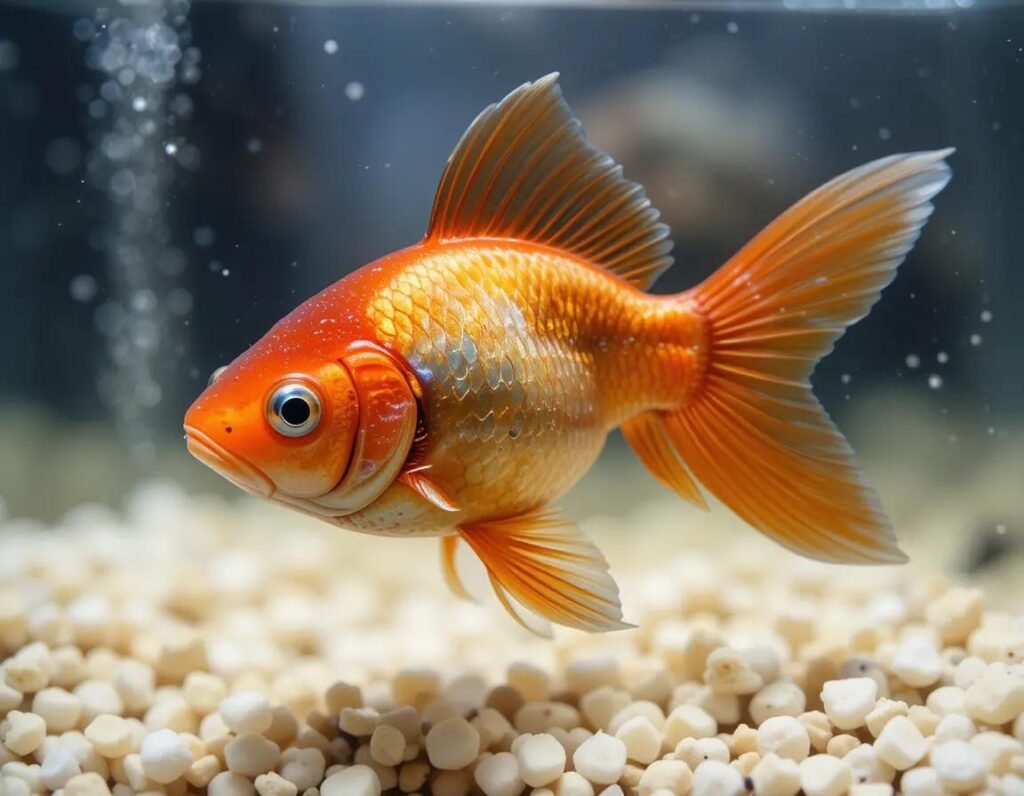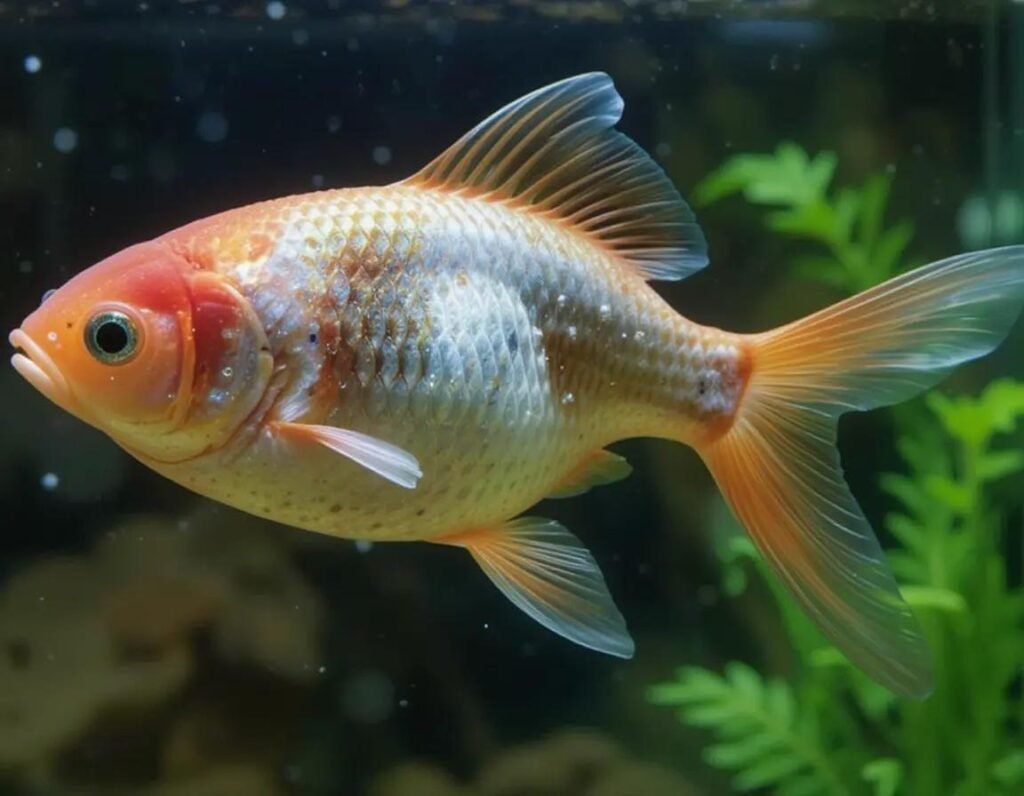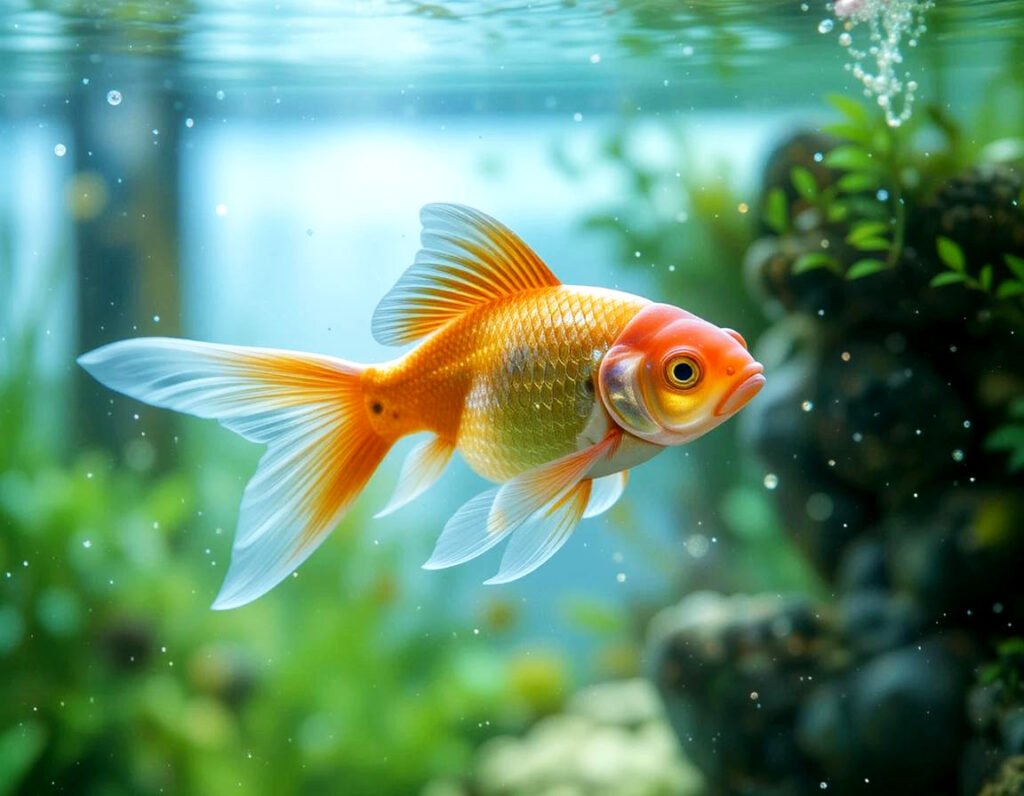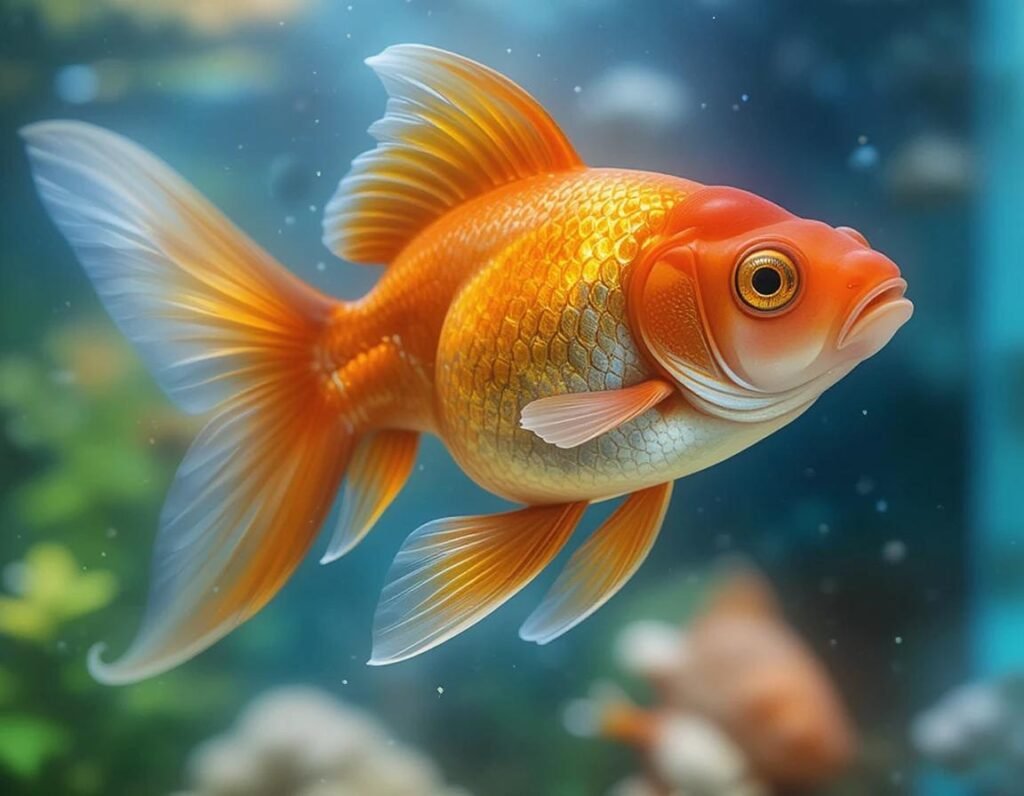
Goldfish Ich Treatment: How to Get Rid of the "White Spots" and Save Your Fish
If you’re a goldfish owner, there’s a good chance you’ve heard of Ich—or Ichthyophthirius multifiliis, if you’re in the mood to sound extra fancy. This little parasite is the fish equivalent of an annoying houseguest who never leaves and, worst of all, it brings some unsightly white spots on your goldfish’s body. But don’t worry, we’re not here to panic. We’ve got your back, with a straightforward guide to treating Ich and making sure your goldfish stays as happy as a clam in a clean tank. Or, you know, a goldfish in a well-maintained aquarium.
What Is Ich?
In simple terms, Ich is a parasite that invades your goldfish’s skin, fins, and gills. It presents itself as tiny white cysts (or spots) on the fish’s body, which might look like your goldfish has caught a case of the “polka dot fever.” It’s contagious, and if untreated, it can be deadly for your fish. But here’s the good news—Ich is treatable, and you can get your finned friend back on track with the right care
Signs of Ich in Goldfish
Before you rush to the medicine cabinet, make sure your goldfish is actually dealing with Ich. Here are a few tell-tale signs to look for:
- White spots on the skin, fins, and gills (like your fish is trying to start a new fashion trend).
- Scratching or rubbing against objects in the tank (your goldfish is clearly not happy with its new coat of polka dots).
- Lethargy (your fish is moving slower than usual, probably feeling under the weather).
- Labored breathing (if your goldfish is panting at the surface, it might have an issue with its gills).
If you see these signs, it’s time to act fast. But don’t panic! Ich is treatable, and your fish can be back to its swimming shenanigans in no time.
Goldfish Ich Treatment: Step-by-Step Guide
1. Raise the Water Temperature
- Why? Ich thrives in cooler water, so if you raise the temperature (but not too high!), you can speed up the life cycle of the parasite and make it easier to treat.
- How? Gradually raise the tank’s water temperature to around 80-82°F (27-28°C). This is the “sweat-it-out” method for your goldfish, kind of like how humans turn up the heat to kill a cold.
- Pro tip: Make sure the water temperature doesn’t rise too quickly, as this can stress your goldfish. Slowly, but surely, heat things up.
2. Use an Ich Treatment Medication
- Why? There are plenty of effective treatments available, and they work by targeting and killing the Ich parasite.
- How? Follow the instructions on the medication carefully. Typically, you’ll add the treatment directly to the tank and let it work its magic. Just make sure to remove any activated carbon from your filter, as it can absorb the medication before it has a chance to work.
- Pro tip: Always double-check the dosage based on the size of your tank. Overdosing can be harmful to your fish, and underdosing might just prolong the issue.
3. Keep the Tank Clean
- Why? Ich loves dirty water, so keeping your tank pristine is essential. Clean water helps your fish heal faster and prevents the parasite from spreading.
- How? Perform a partial water change (about 25-30%) every few days to keep the water quality high. Make sure to vacuum the gravel to remove any cysts or parasite larvae lurking there.
- Pro tip: Don’t overdo it with the water changes. A little bit at a time will keep your fish from stressing out.
4. Salt the Water (Optional, But Helpful!)
- Why? Salt can help reduce stress in your goldfish, and it also aids in treating Ich by making the environment less hospitable for the parasite.
- How? Add aquarium salt according to the instructions. A general guideline is around 1 tablespoon per 5 gallons of water, but always check the packaging.
- Pro tip: Be cautious with salt if your tank contains sensitive plants or invertebrates, as they might not appreciate the extra sodium.
5. Keep an Eye on Your Fish
- Why? Continuous observation helps ensure that the treatment is working and that your goldfish isn’t showing signs of additional stress or illness.
- How? Monitor your fish for any changes in behavior or signs that the Ich is not improving. If things aren’t looking better after a few days, consider consulting an aquarium expert for advice.
- Pro tip: Ich is a fast-moving parasite, so it’s important to act quickly, but don’t stress if it takes a few days for your goldfish to recover fully.

How to Prevent Ich in the Future
After successfully treating Ich, it’s time to think about prevention. Here’s how to keep your goldfish healthy and avoid another parasite party in the tank:
- Avoid introducing new fish to your tank without quarantining them first. New fish can carry Ich without showing symptoms, so giving them a quarantine period will protect your established goldfish.
- Maintain good water quality to ensure your fish are living in an environment where they’re less likely to get sick. Regular water changes and filter maintenance are key.
- Avoid stressors like sudden temperature changes or overcrowding. A stressed goldfish is a sick goldfish.
Final Thoughts on Goldfish Ich Treatment
Treating Ich might sound like a big job, but it’s really just a matter of following the right steps and being patient. Raise the water temperature, use the right medication, keep the tank clean, and watch your goldfish go from “polka-dotted” to “fin-tastic” in no time. If you stay on top of it, your goldfish will be back to its happy, spot-free self, swimming around like a star.
So, next time you spot those pesky white spots on your goldfish, remember: you’ve got this! With a little effort and care, you’ll have your fish feeling fabulous again, and you’ll be the hero of your tank.
When to Consult an Expert for Ich Treatment
While most cases of Ich can be treated at home with the right approach, sometimes your goldfish might need a bit more help. If the treatment isn’t working after a few days or if your goldfish seems to be getting worse (despite your best efforts), it’s time to call in a professional. Aquarium veterinarians or local pet store experts can offer advice, prescribe stronger treatments, or even help identify any secondary infections that might have popped up.
Goldfish are tough little creatures, but they can’t always fight off everything on their own—especially when it comes to parasites like Ich. A professional will help you rule out any other possible issues and give you a more tailored treatment plan.
Wrapping It Up: Keep Those Fins Healthy!
Dealing with Ich might not be the most glamorous part of goldfish care, but it’s all part of the journey. The important thing is that with the right treatment and some patience, your goldfish will bounce back from this pesky parasite and be swimming around happily again in no time. Just remember, your goldfish’s health depends on you—and no one knows your fishy friend like you do!
So, whether you’re dealing with a full-blown Ich outbreak or you’re just trying to prevent it from ever happening, you’ve got all the tools to keep your goldfish in top shape. And hey, if your goldfish does get a little spotty here and there, you can always tell your friends it’s just their “punk rock phase.” Because really, who says fish can’t be trendy?
FAQs About Goldfish Ich Treatment
1. What is Ich and how do I recognize it in my goldfish?
Answer: Ich (short for Ichthyophthirius multifiliis) is a parasite that causes tiny white cysts to appear on your goldfish’s body, fins, and gills. You’ll notice white spots that look like grains of salt or sugar, along with behavior like rubbing against objects, lethargy, and rapid gill movement (panting).
2. How did my goldfish get Ich?
Answer: Ich is usually introduced when new fish or plants are added to the tank without being properly quarantined. It can also be spread by poor water quality, stressful conditions, or overcrowding. Basically, it’s like an unwanted guest showing up at your goldfish’s party!
3. Can Ich be treated at home?
Answer: Absolutely! Ich is treatable at home with the right steps. Raising the water temperature, using appropriate medications, and keeping the tank clean are key to eliminating the parasite. You just need a bit of patience and dedication!
4. What’s the best treatment for Ich in goldfish?
Answer: A combination of increasing the water temperature (to about 80-82°F) and using an over-the-counter Ich medication will usually do the trick. Be sure to follow the instructions on the medication packaging and perform regular water changes to maintain good water quality. If in doubt, consult an aquarium expert or vet for advice.
5. How long does it take for Ich to go away?
Answer: It generally takes 5-7 days for Ich to clear up, depending on the treatment and the severity of the infection. Patience is key—your goldfish will start showing signs of recovery, like swimming normally and the white spots disappearing, as the parasite dies off.
6. Can Ich affect my entire tank?
Answer: Yes, Ich is highly contagious. If one goldfish has it, there’s a good chance others in the tank will catch it, especially if the water quality isn’t optimal. It’s a good idea to treat the whole tank, even if only one fish shows symptoms.
7. Should I remove the infected goldfish from the tank?
Answer: It’s usually not necessary to remove the infected fish unless it’s extremely stressed or injured. Treating the entire tank and maintaining proper water conditions will help prevent the spread of Ich to other fish. However, if you have a quarantine tank, isolating the infected fish could prevent the spread and allow for focused treatment.
8. Can I prevent Ich in the future?
Answer: Yes! Preventing Ich involves keeping your goldfish’s environment as clean and stress-free as possible. Quarantine new fish before adding them to your main tank, avoid overcrowding, and maintain stable water parameters. And don’t forget to avoid sudden temperature changes—goldfish are like us, they don’t like those!
9. Is Ich treatment safe for my plants and other tank inhabitants?
Answer: Most Ich treatments are safe for goldfish, but some may harm plants or invertebrates. If you have plants in your tank, check the medication label to ensure it’s safe for plants. You can also temporarily remove plants or inverts until the treatment is finished.
10. Should I keep feeding my goldfish while it has Ich?
Answer: Yes, but be careful not to overfeed! Goldfish still need nutrition while they recover, but it’s best to offer small amounts of food, as stressed fish can have trouble digesting large quantities. Also, avoid feeding high-protein foods while treating Ich to reduce waste in the tank.
11. How can I tell if the Ich treatment is working?
Answer: Your goldfish will start to swim more normally, and the white spots should begin to shrink and disappear. If the spots stay or new ones appear after a few days of treatment, it could be a sign that the medication isn’t working as expected, and you may need to try a different approach or consult a professional.
12. Can I use salt to treat Ich in goldfish?
Answer: Yes, aquarium salt can help reduce the stress caused by Ich and assist in the healing process. It’s often used in conjunction with medications, but be careful not to add too much, as it can harm sensitive plants and inverts.


